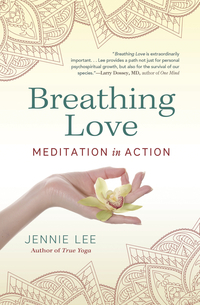Llewellyn Publications's Blog, page 34
December 24, 2018
Exploring the Inner World
Readers, please enjoy this guest blog post by Daniel Moler, author of the new Shamanic Qabalah.
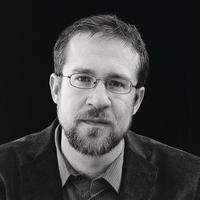 Since I was young, I have always wanted to be an explorer, to travel the outer reaches of space into uncharted territory. Over time, the mysteries of the cosmos grew deeper the more I learned about the way the material universe works. There seemed to be unseen forces at work that I wanted to understand.
Since I was young, I have always wanted to be an explorer, to travel the outer reaches of space into uncharted territory. Over time, the mysteries of the cosmos grew deeper the more I learned about the way the material universe works. There seemed to be unseen forces at work that I wanted to understand.
I was soon to learn that the ancients were not naïve about these invisible forces, but highly understood and even knew how to harness them. Shamanism is one of the oldest spiritual modalities on the planet for understanding the invisible forces of the universe that surround us. Most all the original religions sprang forth from this archaic technology and, in some cases, its practices have been refined over time. The holy Qabalah is just such a refinement. Utilizing the composite symbol system called the Tree of Life, the Qabalah paves a path forward for those who yearn to seek that connection with the unseen.
Set up like a diagram of the cosmos, the Tree of Life is a map for aspiring explorers of consciousness. One thing that is learned as an initiate of the Mystery teachings of Qabalah is that the self is merely a reflection of the greater universe, and vice versa. Therefore, the Tree of Life is not merely a symbol-system representing the framework of the Divine, but also a schema for understanding oneself. It is imperative, then, to know yourself fully and completely in order to comprehend the ineffable cosmos. For this reason, the inscription Gnothi Seauton (“Know Thyself”) was written upon the Temple of Apollo, one of the ancient Mystery schools of Greece. This is the essence of the Great Work: to understand that the key to union with God or Goddess resides completely within your inner self.
In my newest Llewellyn offering, Shamanic Qabalah: A Mystical Path to Uniting the Tree of Life & the Great Work, I lay out a template for exploring the inner and outer worlds in the tradition of the ancients. Fusing Hermetic Qabalah, Peruvian shamanic practices, and many other spiritual modalities, I examine what it is to be an initiate of the Mysteries, the goal of the Great Work, and how to achieve it. I also describe in detail all 32 paths on the Tree of Life, the roadways that act as keys to unlocking the invisible aspects of the universe that reside in each one of us.
Additionally, with my own training in shamanic traditions, I provide ritual examples through an altar set called the mesa in which you can construct your very own control panel for navigating the dimensions of consciousness. The similarities between this Peruvian altar and the Western Mystery Tradition are astounding. One must wonder if the archaic techniques of the Great Work aren’t universal. I believe they are and that we learn a lot by finding the best of what works from these various traditions to evolve spiritual practices for the next generations.
Our thanks to Daniel for his guest post! For more from Daniel Moler, read his article, “10 Tips to Help You Practice 365 Days of Hoodoo.”
December 19, 2018
Earth Reading from Tarot Elements
Tarot Elements by Melissa Cynova

This book will be so very helpful to so many readers, whether you read for yourself, for friends, or professionally. So many times people come to the cards unable to form a question or have a question that is so tangled that it feels like their whole lives are involved. That makes sense because we don’t exist in a vacuum and our lives, no matter how hard we try, are not compartmentalized. Everything is connected.
Melissa developed this system of readings based on the elements to help her clients. It examines all areas of life, helping to identify problem areas and do a kind of diagnostic. The five readings are designed to work together but can also be used alone, if preferred.
Because this book is so integrated, it is hard to just pull a section out, but let’s take a look at her introduction to the Earth reading:
You hear a lot about being ‘grounded’ in the energetic sense, but might not have any idea what that means. Essentially, being grounded in your body is being wholly present and in your skin. The element of Earth is the essence of being grounded, and your home is a huge part of feeling safe and grounded. Finances are also reflected in this element, compounding that feeling of safety and security. One of the most notable things about the earth element is that if you are secure in the present and in your home, it doesn’t matter, really, what happens outside of that space. If your family is going through a tough time, but you’ve got a couch that’s just perfect for snuggling, you have a home base advantage. If you’re going through emotional turmoil, pulling up your Dr. Who blanket and reaching over, knowing exactly where the light switch is by touch helps you settle down. When you feel at peace in your home, things outside of you don’t have as much power to shake you up.
Instead of living in the future with anxiety or staring into the past, you are truly grounded when you are right here, right now.
Financially, when you have a certain amount of money in the bank, you can relax. If the water heater breaks or the car overheats, you won’t have that moment of panic and can just take care of it like a grown up. I’ve found in my own life and in the lives of my clients, there is always a number that someone can think of that will make them feel at east. If you have that number in savings, it releases the anxiety that debt can cause. It lends that same grounded energy to your life.
Safety, security and peace of mind – these are the goals of the Earth reading.
First things first: if you don’t like or feel comfortable in your home, it’s going to be difficult for you to deal with the rest of your life. A few years ago, I met one of my clients at her new house. We got there at the same time and I followed her in. She tossed her keys toward a table and fell short. Damnit. She couldn’t find a pen at first. She couldn’t find a notepad and got cranky about it. It had been four months since she gotten the house, and still hadn’t finished unpacking. All of her stuff was present, but everything wasn’t in its home. It made her her homecoming uneven and annoying. Not impossible, but difficult. There is something about coming home and feeling at peace that helps you deal with the stress of the day.
As a society, many of us are far removed from living off of the land. Now we live on it. Even though I’m a Pagan, honestly, I’m a terrible one. I have allergies, I hate bugs and the heat makes my asthma crazy. I swear, I’ve looked at the full moon more out of my kitchen window than I’ve seen in outside. My idea of ‘roughing it’ is no restaurant in the hotel. Nightmare. I do have friends who go camping on purpose, so I know that there are others like them. They feel both free in and connected to the outdoors, and strive to bring that energy into their homes. I think that we’re all looking for that feeling of having a nest. A sanctuary where everything makes sense.
I finally feel connected to the Earth in my home. It took a while to get where I wanted to be, but after a few moves and life changes, I’ve reached a place in my life where I can navigate my kitchen without turning the lights on. I have artwork that I love on the wall and little collections and tchotchkes around the house that make me feel better every time I see them. I feel comfortable walking around in my underwear and eating leftovers at 3am. My kids and my partner feel a sense of ease when they get here. Our house isn’t perfect, by any means, but it feels perfect to us. We don’t have a lot of money or really nice stuff, but it’s ours and it’s perfect for us. I always remember my Dad saying when I was a kid, “It might not be fancy, but it’s ours, and we’re going to take care of it.” Regardless if you have 600 square feet or 6000, building a nest in which you feel safe is paramount to peace of mind.
When I do readings for people who are not at home in their house, I can pick up on that discomfort. They’ve inherited furniture that’s stacked in the basement. They haven’t gotten rid of their kids outgrown clothing (or their own). All over their house, you’ll find things that take up square footage without paying rent. This is a problem. I don’t know a lot about feng shui or how energy works in homes, but I do know that if your home is filled with things that don’t matter, there is less space for those things and people who do. Lookit – I just did feng shui math.
Another problem turns up if they’ve gotten a divorce and have a big, empty house that doesn’t suit them anymore. Or, they got a divorce and realized that their house never really matched them. When I was divorced, it was difficult for me to be alone in my own house. My kids were spending time at their dad’s house, and he was gone, too. I remember walking around the empty house sobbing. Even though the house was technically mine, it didn’t FEEL like it. It felt like the house that I used to own with my husband. It held arguments and sadness. It held the heartbreak of realizing that he wasn’t my Person anymore. That maybe I didn’t have a Person. It was quiet, lonely and alien. I hated to be home without my kids.
It took me awhile to pull my head up and look around. Do you know what I saw? White walls. No bookshelves upstairs. It was really stark, and I’m a person who dances in bright colors. I saved up and hired a fella to paint every room in my house. MY house. The living room was bright orange and soft yellow. Green bathroom, peacock master bath, pink and purple for the Girl Child’s room and green and yellow for the Boy Child. I bought a beautiful comforter made of recycled sari’s for my bedroom and painted the walls light brown and avocado. The basement? Sky blue!
Just this simple thing – adding color – made this MY house. Mine. I added bookshelves in nearly every room and filled them up, creating the library I’d always wanted. After I was finished, I felt GOOD. I liked coming home and I loved feeling that I had a nest. A home instead of a house. This wasn’t as expensive as new cabinets, flooring or siding. It was affordable and made such a huge difference to me. It helped me realize that the more my home reflected who I was, the more comfortable I would feel in it. I never quite thought about that before.
I also feel better when my house is clean. Call it compulsive, but I can’t think clearly in a dirty house. I just keep thinking about the mess and how it’s just sitting there…mocking me. (I literally just got up to put dishes in the dishwasher because writing about it reminded me and bothered me SO MUCH) I’m sure this is a leftover impulse from my childhood, but knowing that the sinks are empty and the floor is swept makes me sleep better.
Another thing that I do as medicine for my home is using candles and incense. And before you give me any shit about cultural appropriation for using sage or smudge sticks, please recognize two things. One, I am a descendant of Elsie Lake, from the Seneca people. Two, so many spiritual practices use smoke to clear energies, that it’s become commonplace outside of the traditions of the First Nations. Actually, I literally can’t think of a spiritual practice that DOESN’T rely on incense, candles, censors, or even charcoal to realign energies and provide focus. Even in the Catholic church in which I grew up, the priest used smoke in ritual to gain attention at sacred times, and candles to carry intent. As long as someone isn’t wandering around with a sacred symbol on the back of their phone or calling what they do an ‘authentic smudging ceremony’ when it’s actually them walking around with a sage and cedar stick they got off of Amazon, asking all evil spirits to get the hell out of their apartment, I don’t care.
Using smoke and candles to clean the energy in your home is a really old and really easy tradition. You can find ethically sourced sage bundles online or grow your own. You can pick up incense almost anywhere. Think of these tools as energy erasers. They can cancel out any lingering energy and basically act as a reset button for your home. I’ve outlined a way to clean your house energetically later in this chapter.
I often read for people whose lives have changed in many ways. They’re empty-nester’s, their relationship has changed, they’ve moved out of their folk’s house or home from college. Their lives have changed, but their homes haven’t changed to reflect it. One of my best friends is sending his second kid off to college, and the first thing he and his wife did was sell their big house. He’s one of the most centered fellas I know, and he doesn’t like unnecessary things in his home. He and his wife decided that they had excess house, and found a much smaller, out in the woods place where the kids still had rooms, but it wouldn’t feel as empty after they went back to school. Brilliant. Now they have a forever-home, and they’re not even close to retirement yet.
I’ve had clients who have moved into apartments after living in a house. Who have inherited all of their Great Aunt Ida’s china and had no room for it. Who have never let go of a magazine or a plastic butter dish (because you never know) in their entire life. I understand this impulse. My family is blue collar all the way. Farmers and police officers and nurses. I understand not releasing things, because they can build a wall of security. The problem comes up when the stuff has no value – not to you, not to a collector. If they have no value, they become burdensome.
This reading can find that you need to move, declutter, or even just add some paint. If you are happy in your home, I’m happy to tell you that there are four other chapters for you in this book! And way to go – that’s not easy. If you can’t feel at peace in your home, it’s difficult to feel at peace in any other part of your life. We long for home. We sing songs about it. Our hearts live there and our families connect there. If our home is lacking, our life is, too.
As far as the financial problems that can come up and make everything unsettled, this reading will work as well. Just shift your question and thinking to financial security instead of your home. Also, I’ve put in some tips at the end of this chapter for financial stability that might help out.
December 11, 2018
When Paranormal Entities Follow You Home
Readers, please enjoy this guest blog post by Richard Estep, author of Trail of Terror.
It takes a lot to make an agnostic call in a Catholic priest to cleanse his home. Yet that is exactly what happened to me one winter a few years ago.
I have been a paranormal investigator and author since the mid-Nineties, and thought I’d seen it all. If the truth be told, I’d gotten a little jaded. Most of my peers employed some sort of “psychic protection” ritual, such as envisioning themselves surrounded by a bright white light of spiritual origin, when leaving a supposedly haunted location. I never did, and it was something I would ultimately have cause to regret.
It had been a busy year, one in which I’d crossed several major locations off my bucket list: Waverly Hills Sanatorium in Louisville, Kentucky, where thousands of people had died of tuberculosis; Bobby Mackey’s Music World in Wilder, Kentucky, proclaimed by some as “the gateway to hell;” and Asylum 49, one of the world’s most haunted hospitals, to name just three. At none of them did I make any effort at all to protect myself from negative energies.
The first sign of trouble came when my wife woke up in the middle of the night, shaking me awake to tell me that she had spotted a small, child-sized figure standing at the side of the bed. From her description, it had looked something like a Jawa from the movie Star Wars, although it was more of a dark shadow figure, with the hood of a robe covering its head and face.
Although I took her sighting seriously, I also thought it possible that she had experienced either a hypnagogic or hypnopompic hallucination, a fairly common trick of the mind when it is falling asleep or returning to wakefulness.
Next, we started to hear the sound of a woman’s voice, usually calling out from downstairs when we were both upstairs. Usually it was a single word: “Hello.” Each time it happened, our dog would go berserk, pounding downstairs for all she was worth before growling and snarling at an empty corner of the living room.
Then I saw the shadow figure myself. I was sitting in the hallway, talking to my boss on the phone. It was broad daylight. “I’m going to have to call you back,” I told her, “because I’ve just seen a ghost…” It had been an adult-sized human form, moving from one side of the hallway to the other over the space of two or three seconds.
There was no longer any doubt in my mind: I had brought back something unwanted and unwelcome from one of my investigations. Now I had to get rid of it.
I called in a good friend and fellow paranormal investigator, who also happened to be a Catholic priest.
“Will this even work?” I asked. “I mean, I’m not a Christian…”
“It only matters that you believe,” he replied with a smile. “Not so much what you believe.”
He performed a ceremony of blessing, working his way throughout the house and anointing each window and doorway with a cross made from holy water. Don’t ask me quite how, but it worked. When all was said and done, my family and I were never bothered by paranormal activity at home again.
You can be sure that ever since, I have taken great pains to protect myself from other potential psychic trespassers…
Our thanks to Richard for his guest post! For more from Richard Estep, read his article, “Why Are Certain Locations Haunted? .”
December 5, 2018
A Tarot-Filled 2019
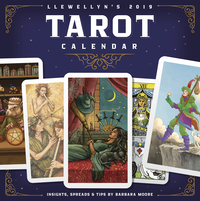
There is still time for last-minute gift buying. Perfect for the seasoned tarot lover as well as for the curious beginner, this calendar is a great way to sample images from different decks and learn tips, tricks, techniques, spreads, and symbolism in small, bite-sized bits throughout the year.
Here is a picture of one of my favorite pages from the calendar:
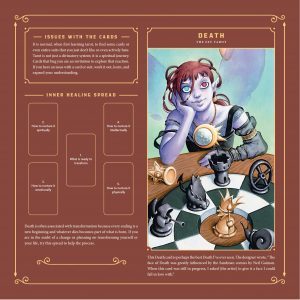
December 1, 2018
Why 365 Days of Hoodoo?
Readers, please enjoy this guest blog post by Stephanie Rose Bird, author of Sticks, Stones, Roots & Bones, Four Seasons of Mojo, and the new 365 Days of Hoodoo.
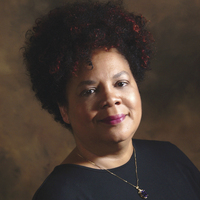 When you first encounter my book 365 Days of Hoodoo, you will notice a couple of things beyond its intricate cover—it is thick with pages and it has a good weight to it. Beyond that is the title. The title is a clue to its use. You see, it’s designed for daily use over a period of a year.
When you first encounter my book 365 Days of Hoodoo, you will notice a couple of things beyond its intricate cover—it is thick with pages and it has a good weight to it. Beyond that is the title. The title is a clue to its use. You see, it’s designed for daily use over a period of a year.
I am a life-long educator. The idea of this book is in response to many things, one of which is that readers of my first Llewellyn Book, Sticks, Stones, Roots & Bones, desired an apprenticeship. At the moment, I wasn’t offering apprenticeships, but eventually I came to suspect that I could create one in written form, hence the daily format of my new book.
Over the course of a year, you can learn a lot through daily practice. There is history and background to Hoodoo concepts, techniques, and lore in each chapter. The chapters are spaces to learn about specific concerns to Hoodoos, for example, love, luck, protection and money tricks, jobs, spells, and rites. You learn to make things important to Hoodoos, such as mojo bags of a variety of sorts, war and peace bottles, floor washes, candles and their fixins’. You learn about how to grow specific Hoodoo herbs. There is also space to reflect on what you have learned about each topic, at the end of each section of the book.
The fact that you are encouraged to keep a Hoodoo Journal goes along with the concept of this being a year of learning and practice. In the journal you can reflect on all things Hoodoo, including what you’ve learned, celebrating your successes, and making plans for further inquiry.
So, while you can certainly pick up the book and pick out work to do and a concept to explore, for full effect you’ll want to stick with it, for the period of a year. Feel free to take as many breaks as you need, but do 365 Days of Hoodoo.
Our thanks to Stephanie for her guest post! For more from Stephanie Rose Bird, read her article, “10 Tips to Help You Practice 365 Days of Hoodoo.”
November 26, 2018
Are Angels Non-Denominational?
Readers, please enjoy this guest blog post by Tanya Carroll Richardson, author of Angel Insights and the new Angel Intuition.
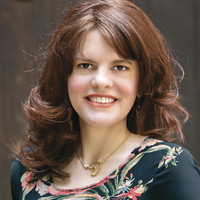 “Did you tell them that angels work with everyone?” my husband asked.
“Did you tell them that angels work with everyone?” my husband asked.
I’d just gotten off the phone, wrapping up a radio interview to promote my latest book, Angel Intuition. “What?”
He sighed, visibly frustrated. “Did you tell them that angels are non-denominational? That they love everyone? Tanya, you have to say that right upfront. It’s the first thing you should tell people.”
He’s right. I used to take it for granted that folks knew angels were not Christian or Pagan or Buddhist or Muslim. As Lorna Byrne says, angels are not concerned with religion or particular spiritual traditions. They are concerned with you—helping you make the most of your human journey and fulfilling your destiny. Yet, if angels are a concept that doesn’t resonate with you, you’re not alone. I was never concerned with or attracted to angels until the day I actually saw one—a transparent figure that appeared in my bedroom with enormous feather wings.
Growing up, I was raised by a single mother who was an atheist. Or more accurately, an agnostic, which the dictionary describes as “a person who claims neither belief nor disbelief in God.” She once told me, “I think there’s something out there that’s bigger than us, but I’ve got no idea what it is.” And she wasn’t too concerned about it, either.
The apple could not have fallen farther from the tree, in my case. I was a very spiritual young person. In middle school I set up my own altar in the corner of my bedroom, complete with a cross, where I could kneel and pray. In high school I read about Wicca and created a new altar where I kept my tarot cards and incense. It was a solitary seeker’s journey.
Not being a part of a formal spiritual community was a real source of angst for me growing up. I was jealous of friends who were Catholic and got to enjoy all the ritual of that religion, or friends whose parents were Unitarian and got to study everyone from Thor to Ganesha. But now I feel it might have been part of Spirit’s plan for me that Mom was a blank slate in that department. I grew up with zero conceived notions about “God,” and so I made it up, and picked things up, as I went along—embracing Kabbalah, Buddhism, Paganism…and finally, angels.
I knew nothing—or very little—about the Bible when I saw an angel in my room that day ten years ago, and most people (including me at the time) associate angels with Christianity and the Bible. Yet angels are mentioned in many popular religious texts and are being more widely sought out by people who consider themselves “spiritual but not religious.”
The pros of religion seem to be that it can give people comfort, community, faith, purpose, and a sense of something greater than themselves. The downside is that in some religious communities people are encouraged to trod a very narrow path, like a horse with spiritual blinders on. As someone who works with angels—guardian angels, helper angels and archangels—every day in intuitive sessions with clients, I can assure you that angels are, quite simply, beyond religion. They are also beyond judgment or expectation. Angels truly love you unconditionally.
My main concerns when writing Angel Intuition were to give people a look inside the life of a professional psychic and to teach readers how to better understand, utilize and improve their own intuition. But there’s plenty in this book about angels, too. It was inevitable! They have become such a big part of my life, and I hope they become a bigger part of your life as well.
Our thanks to Tanya for her guest post! For more from Tanya Carroll Richardson, read her article, “10 Things You Probably Don’t Know About Your Intuition .”
November 21, 2018
A Worthy Bag
A Worthy Bag
A lot of us are thinking about holiday shopping, either for our tarot-loving friends or maybe a little something for ourselves. Our satin tarot bags have images from some of our favorite decks, like the two pictured here, from the Mystical Manga Tarot and Tarot in Wonderland. The images make it easy to know which deck is in which bag, if you (like me) have lots of decks. The bags also provide enough room for a small reading cloth or a few crystals or other talismans you may like to keep with your deck.

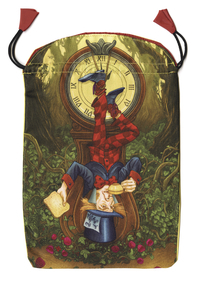
November 20, 2018
Congratulations to Breathing Love and Jennie Lee!
Congratulations to Breathing Love and Jennie Lee!
Breathing Love is a winner of the 2018 American Book Fest Best Book Award (Self Help/Motivational Category), and a finalist for the 2018 Independent Author’s Network Book of the Year Award (Spirituality/Inspirational Category). It was also named one of the top 10 inspiring books of January 2018 by Aspire Magazine!
Additional Praise for Breathing Love:
“In this beautiful treatise, Jennie Lee gives practical ways to embody love itself; a true path to connection with our inherent divinity.”—Tosha Silver, author of Outrageous Openness and Change Me Prayers
“Jennie Lee’s Breathing Love is extraordinarily important, because our country and our world are afflicted by a tsunami of separation directed toward “the other.” This pandemic of separation and hostility now threatens our future. In elaborating on love, Lee provides a path not just for personal psychospiritual growth, but also for the survival of our species.”—Larry Dossey, MD, author of One Mind
“Breathing Love is brimming with inspiration for those building or expanding a practice of meditation, not just as a self-care practice, but as a means to heal our hurts and fill our hearts with calm trust and LOVE.”—Agapi Stassinopoulos, author of Wake Up to the Joy of You
“Brilliant, elegant, and easily practical for those just getting into meditation, and for the seasoned veteran. This is a book to cherish, filled with good stories from Jennie’s remarkable life of devotion.”—Stephen G. Post, author of Why Good Things Happen to Good People and president of the Institute for Research on Unlimited Love
“This book will set you on the path to healing and to seeing relationships in a whole new light. Through her personal stories, Lee illustrates the way we can evolve consciousness from fear to love—an essential skill for everyone’s inner peace.”—Gerald G. Jampolsky, MD, co-author of Aging with Attitude
November 19, 2018
The Dark Side of Faery
Readers, please enjoy this guest blog post by Storm Faerywolf, author of Betwixt & Between and the new Forbidden Mysteries of Witchcraft
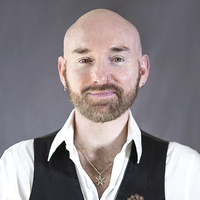 The magic of the Faery tradition is—first and foremost—primal. Far removed from the glittery fantasies of winged sprites granting wishes to good children, the real face of faery is far more potent…and far more dangerous. Looking back to old folktales, we see much in the way of charms and spells designed not to put us in touch with the faeries, but instead to protect from them.
The magic of the Faery tradition is—first and foremost—primal. Far removed from the glittery fantasies of winged sprites granting wishes to good children, the real face of faery is far more potent…and far more dangerous. Looking back to old folktales, we see much in the way of charms and spells designed not to put us in touch with the faeries, but instead to protect from them.
The word “faery” originally meant, “things of magic and enchantment.” This we must keep in mind when reading the old stories, lest we unnecessarily pigeon-hole the experiences of our historical forebears, as well as our own. “Faery” was not so much a specific people or place, but everything that was “otherworldly” or had an air of magic. “Faery” also has connections to “eerie,” a common sensation when dealing with otherworldly powers and a good indicator for when we are legitimately in their presence, reminding us to “be on our toes,” lest we inadvertently succumb to their potentially harmful influence.
Don’t get me wrong: Though it is necessary to be aware of the intrinsic dangers involved, this should not deter us from seeking to deepen our relationship with these powers. In order for a Witch or Warlock to truly develop their magical potential we cannot do so alone. The world of Witchcraft is one populated with all manner of beings and powers that can be potential allies in our shared work. The fae are an inherent part of nature, and through working with them we can further develop our own magical potential, as well as begin to try and heal the spiritual rift that has been at the root of so many of our global problems, both environmentally, as well as socially. In order for us to evolve as a species we must be able to look beyond the “us vs. them” paradigm that has plagued our kind for millennia and begin to see ourselves as simply one part of a greater holism; opening our awareness to other intelligences and types of life, both human and non, and hold them all in a place of equality.
For those who may already feel deterred by my cautionary note, fear not! Folklore and tradition have given us tools on how to best navigate our encounters with the magical realms in ways that help mitigate the dangers involved. By examining the practices and stories of our ancestors we can begin to discover symbolic patterns that assist us in making the shifts in consciousness necessary for working in a healthy way with the unseen denizens of the cosmos. By aligning ourselves with them we are better able to discover our own inherent humanity and begin to claim our divine birthrights as co-creators of a natural and spiritual world, populated with many different intelligences and powers. It’s all there, just begging for us to look beneath the surface.
Our thanks to Storm for his guest post! For more from Storm Faerywolf, read his article The Forbidden Nature of Witchcraft: The Shadow, Power, and Poetry.”
November 12, 2018
Halloween, Haunts and History: My Weird Birthday Present to Myself
Readers, please enjoy this guest blog post by Matthew L. Swayne, author of Haunted World War II.
It must have been one boring, leafless November 4th or something like that—right about the time when the Jack O’Lantern started to turn to mush, the leftover trick-or-treat candy began to dwindle away in the plastic pumpkin bowl, and movies about couples hoping to get married by Christmas suddenly replaced all the cool movies about serial killers who seemed to target just such couples—that I thought, “Why can’t every day be Halloween?”
I was born on Halloween, and the holiday raced valiantly in a dead heat with Christmas for my favorite holiday. (It’s hard for a fistful of Snickers miniatures to compete with a room full of toys basking in twinkling Christmas tree lights, after all.) I was also a newspaper reporter who minored in history.
Using a strange calculus that combined my love of writing, Halloween, and history, I decided that I could make Halloween last all year. To extend the Halloween season—or “The Season of Matt™,” as I like to call it—all I really needed to do was write about ghostlore, ghost stories, and accounts of the supernatural, in my spare time. The decision to mix Halloween, haunts, and history has since taken me to the haunted halls of colleges and universities, to a Mexican restaurant bathroom that may or may not be occupied by rock star spirits, and to Johnny Cash’s ghost-filled Jamaican vacation retreat.
What a wild trip it’s been.
For the past few years, I’ve started a trek into Haunted World War II, which I want to share with you now.
Historians probably discount—and may even loathe, which is academic-speak for “hate”—ghost stories about war’s solemn and sacred sites. I get that. But, I would like to challenge that prejudice just a bit. The tales of the supernatural near the world’s battlefields are so numerous that these stories must be connected to scenes of conflict and war precisely because of the sacredness of those sites. Our ghost tales of fallen warriors, haunted warships, and even ghost planes that still patrol the skies prove that only a thin line separates the hallowed from the haunted.
I’ll take it one step further. Although ghost stories can’t be considered perfect—or even great—history lessons, ghost stories can help teach history by keeping historic sites in the mass consciousness and by inspiring potential students to further investigate the actual events that surrounds these fields of valor. In fact, I contend one of the primary reasons for ghost stories is to preserve the memory of the people, places, and events of the past. They could be considered proto-history lessons.
So, I hope you take some time this Season of Matt™—I mean, Halloween—to enjoy an exploration of World War II’s ghostlore, supernatural encounters, and tales of the weird and unexplained.
Our thanks to Matt for his guest post! For more from Matthew L. Swayne, read his article, “World War II’s 10 Weirdest Paranormal Mysteries.”
Llewellyn Publications's Blog
- Llewellyn Publications's profile
- 243 followers


